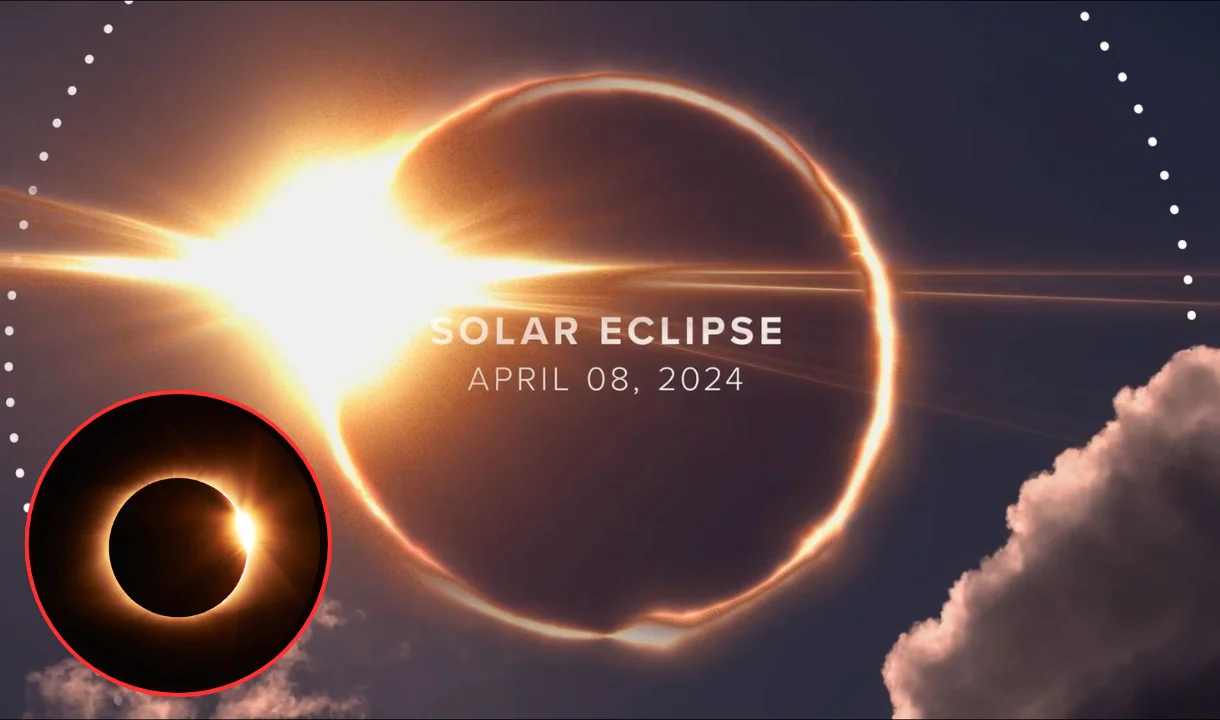This Solar Eclipse Will Turn Day Into Night | More Things Happening On April 8!
Solar eclipses have significant places in history. On April 8, 2024, we’re about to witness a solar eclipse so rare that it happens once every 375 years in the same spot on Earth. This event will appear across the United States from Texas to Maine, giving many states a front-row seat to this incredible phenomenon. This will also be the last chance for the lower 48 states to see one for another 21 years. The eclipse will start in the U.S. at about 1:27 p.m. CDT. But the eclipse is not the only shocking thing happening on the same day. This day will also feature the appearance of a rare “devil comet” and groundbreaking experiments with the world’s most powerful particle accelerator. Buckle up to know more about a once-in-a-lifetime celestial show and more things happening.
The Solar Eclipse 2024
The 2024 solar eclipse is unique for several reasons. Its path across the U.S. means makes it visible to millions. The path of totality falls through several major cities and states like Texas, Oklahoma, Arkansas, Missouri, Illinois, Kentucky, Indiana, Ohio, Pennsylvania, New York, Vermont, New Hampshire and Maine. Some parts of Michigan and Tennessee will also witness if conditions are clear.
In this total solar eclipse, the moon completely blocks out the sun, turning day into night for a few precious minutes. For some places, darkness will last up to 4 minutes and 28 seconds—a duration that hasn’t been matched by any eclipse visible in the U.S. for decades.
What Will Happen During the Total Solar Eclipse?
During a total solar eclipse, the moon aligns perfectly between the Earth and the sun. It will cast its shadow while momentarily blanketing a strip of the Earth in darkness. This brief lapse triggers some fascinating natural phenomena. The temperatures drop, streetlights flicker, and even animals will act unusually.
The sun’s corona or its outer atmosphere becomes visible, creating a spectacular halo in the sky. For a brief moment, stars and planets like Venus, Jupiter, Saturn, and Mars will shine in the sky during the day. Venus will appear brightest, and Mercury will appear vague. This will offer a unique astronomical spectacle.
Where is the Solar Eclipse Path of Totality?
Stretching approximately 115 miles wide, the path of totality will pass over key cities including Dallas, Little Rock, and Indianapolis. The eclipse will remain accessible to over half of the country’s population within a day’s drive. This broad swath of visibility ensures that countless Americans can experience the total eclipse firsthand.

Do I Need Special Eclipse Glasses?
Absolutely! Viewing the sun directly, even during an eclipse, can cause serious eye damage. Eclipse glasses with the ISO 12312-2 code are a must to safely enjoy the show. These glasses are readily available from reputable vendors and will protect your eyes from harmful solar radiation.
How Long Will the Eclipse Last?
Depending on your location along the path of totality, the eclipse’s total darkness will differ. The longest period of darkness will be 4 minutes and 28 seconds. Many major cities across the path will experience around 4 minutes of darkness. However, the longest period of totality will take place in Torreón, Mexico.
This time of the eclipse is surely longer than the eclipse of 2017, which lasted only 2 minutes and 42 seconds in its longest duration. This makes the 2024 eclipse a particularly special event worth experiencing.
Look for the Baily’s Beads and the Diamond Ring
As the moon covers the sun, watch for Baily’s Beads and the Diamond Ring. These are the two phenomena that occur just before and after totality. Baily’s Beads appear as the sun’s light peeks through the moon’s uneven landscape, creating a string of bright spots. The Diamond Ring effect happens when only one bead is visible. It will shine brilliantly against the darkened sky, resembling a giant diamond ring.
The Appearance of The Rare ‘Devil Comet’ During The Eclipse
Comet 12P/Pons-Brooks known as the “devil comet,” will make a special appearance during the eclipse. This comet, known for its periodic bright flares, will be visible to the naked eye. It circles the sun every 71 years. This adds a spectacular twist to the solar eclipse experience. Its hornlike appearance and the periodic eruptions of gas and dust create a glowing trail, making it a sight to behold.
To see the devil comet, look to the skies during the eclipse. The comet’s expected location in relation to other celestial bodies will offer a once-in-a-lifetime viewing opportunity, especially for those positioned in the eclipse’s path.

NASA Firing Rockets on April 8th!
The internet got crazy over the fact that NASA is launching three rockets into the moon’s shadow on the day of the Eclipse. The rockets are apparently a study of how the eclipse impacts Earth’s upper atmosphere.
According to the fact check of VERIFY and 13 News Now, the three rockets are set to launch from NASA’s Wallops Flight Facility in Virginia. These rockets are generally about 40 to 80 feet tall as said by NASA’s Goddard Space Flight Center.
The sounding rockets are expected to take off from Earth at different times. They are hoping to get to a maximum altitude of 260 miles.
Testing the World’s Most Powerful Particle Accelerator
As the eclipse casts a shadow over the Earth, scientists will be busy with another monumental event. This is the testing of the Large Hadron Collider (LHC) in search of dark matter and other fundamental particles. This experiment aims to unlock secrets of the universe, including the mysterious composition of dark matter, which remains one of science’s greatest puzzles.
CERN is expecting to shoot protons down at nearly the speed of light along a 17-mile-long tunnel. They are trying to find what makes up 28% of our universe.

Conclusion
The upcoming solar eclipse represents a unique convergence of natural wonders, scientific exploration, and cultural narratives. It’s a reminder of the universe’s vast mysteries and our place within it. Let’s embrace this opportunity for learning, exploration, and connection. Whether through the lens of a camera, the protection of eclipse glasses, or the data from a particle accelerator, April 8, 2024, offers a chance to participate in a moment of cosmic significance.







